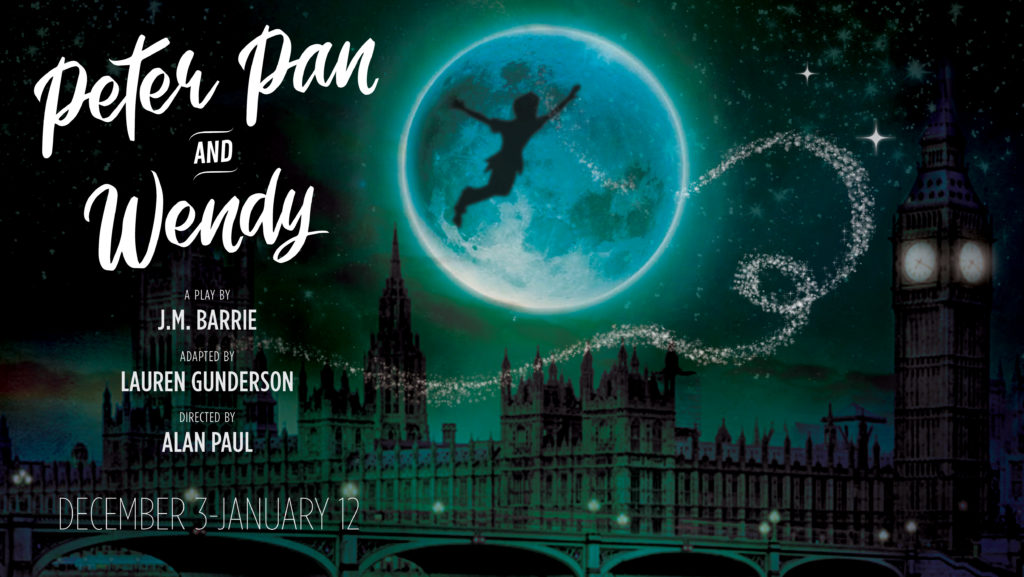
By Martin Morse Wooster: Perhaps the most interesting play I saw in 2018 was a revision of Macbeth done in 1664 by Sir William Davenant, which was performed at the Folger Theatre. Davenant wrote his revisions after theaters had been closed for 20 years, and the audiences of the 1660s wanted something different than when Shakespeare wrote 60 years before. They liked songs more than Shakespeare’s audience, so the witches had three arias, with the Folger Consort as musical accompaniment. Davenant also used his blue quill to change words he didn’t like, so the witches became “unhappy sisters” instead of “weird sisters” and when Macbeth says “out, out brief candle,” Davenant had him say “out, out, short candle.”[1]
Peter Pan and Wendy is a revision of J. M. Barrie’s Peter Pan by Lauren Gunderson. Gunderson is credited as adapting Barrie’s play, but a better credit would be that Peter Pan and Wendy is a play by Lauren Gunderson based on characters created by J.M. Barrie. Peter Pan and Wendy is to Peter Pan as the Star Trek: Kelvin universe is to Star Trek; the male characters are mostly Barrie’s, the female characters are Gunderson’s, and nearly everything that happens in Neverland is radically different than what Barrie had in mind.
Lauren Gunderson (whose website is here) is credited by American Theatre as being the most produced playwright in America in 2018. She’s 37 but has already written about 15 plays, as well as at least one kids’ book about science. Her plays are noted for having strong women characters and having something about science, so the audience gets fun facts along with good theater. The only play of hers I’ve seen is Emilie, about an 18th-century aristocrat who makes important discoveries in physics. Friends of mine saw her play The Book of Will, about the creation of Shakespeare’s First Folio, and thought they learned things about how the book was created.
And because Gunderson was sitting four rows in front of me in the dress rehearsal I attended, she told me that, even though she writes about women and science, she doesn’t consider herself an sf writer.
Much of what Barrie wrote in Peter Pan remains in Peter Pan and Wendy. Peter Pan is a blond guy who wears the traditional green outfit. Lots of members of the cast fly around the stage in harnesses.[2] There’s still a giant crocodile with a clock inside who likes eating people. There is still a dog on stage; Bailey, in fact, was the understudy for the dog that appeared in Finding Neverland. Most surprisingly, Gunderson figured out a way to get the audience to clap for Tinkerbell, although the reasons why they are clapping are quite different.
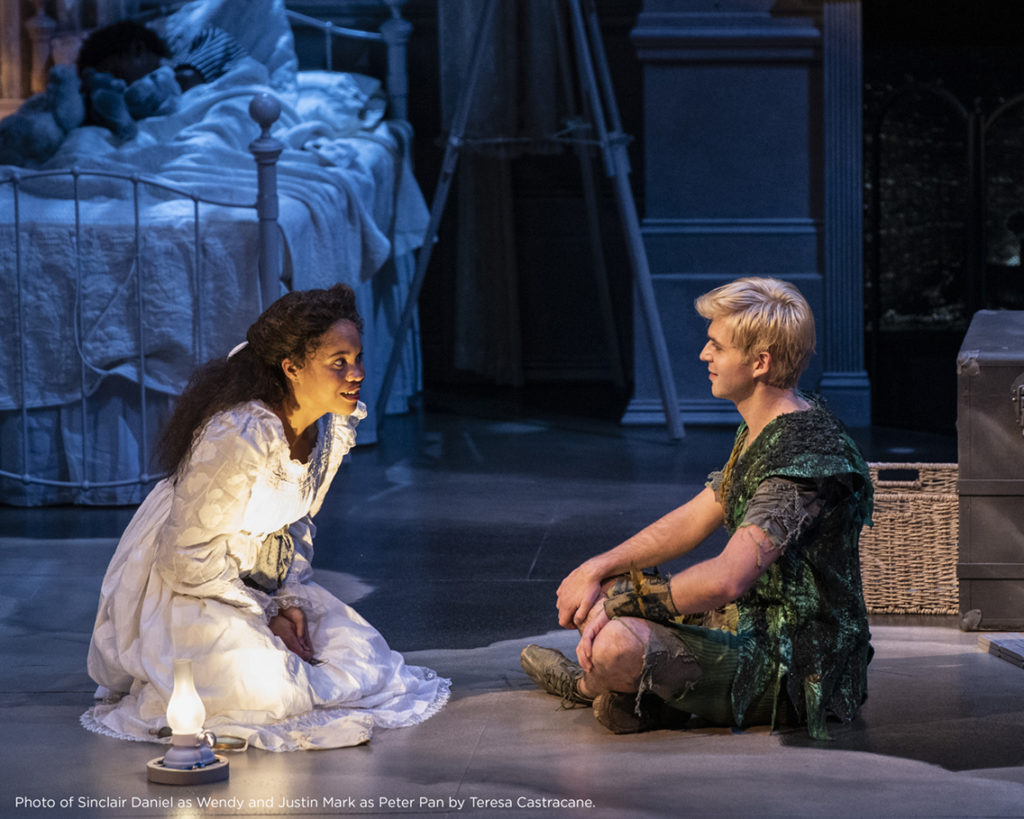

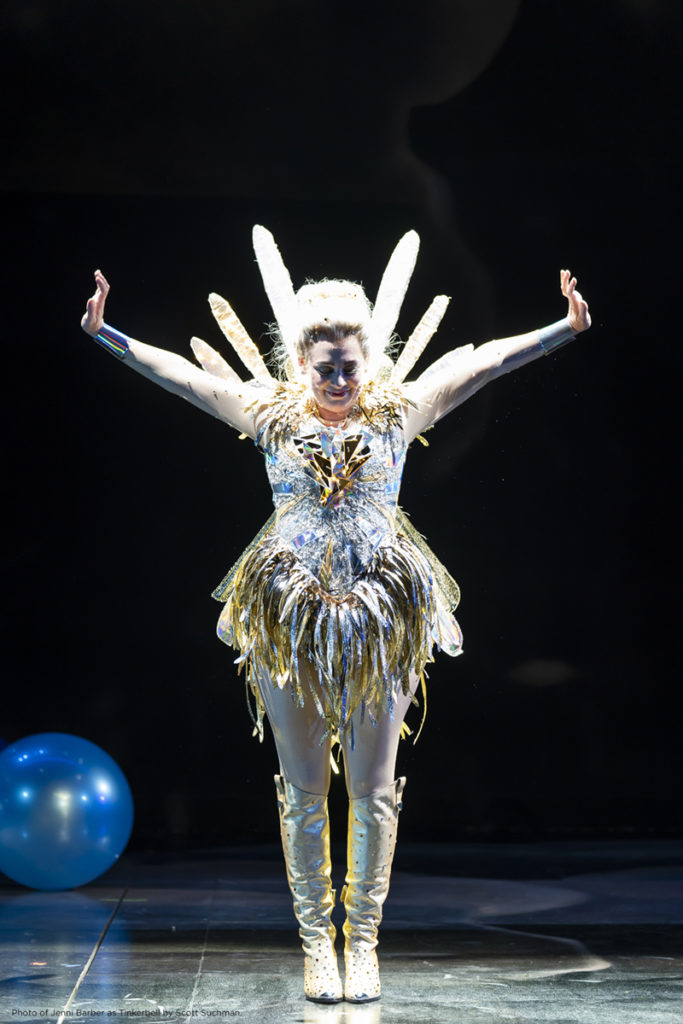
Where Gunderson differs from Barrie is in how the women in the play are depicted. We begin in the Darling’s bedroom, where Wendy and her brothers are getting ready for bed. Then they see a light. But Wendy decides she will report the new star to the Royal Astronomical Society. Then she discusses her love for Marie Curie, who won the Nobel Prize a year before Barrie’s play was first produced. Then there is a magnifying glass Wendy uses, which will play a key role in the second act.
So we’re off to Neverland! And yes, the Lost Boys are there, and Captain Hook, and Smee. But then we have Tiger Lily, whose role is now problematic. Changing her role changed the backstory of how Neverland came to be.
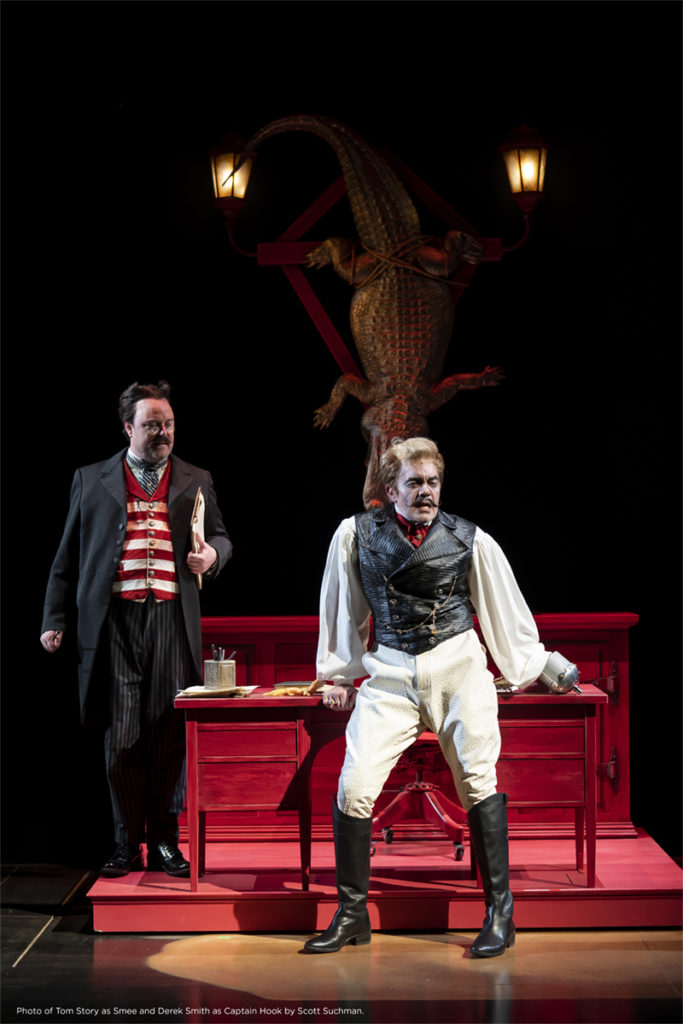
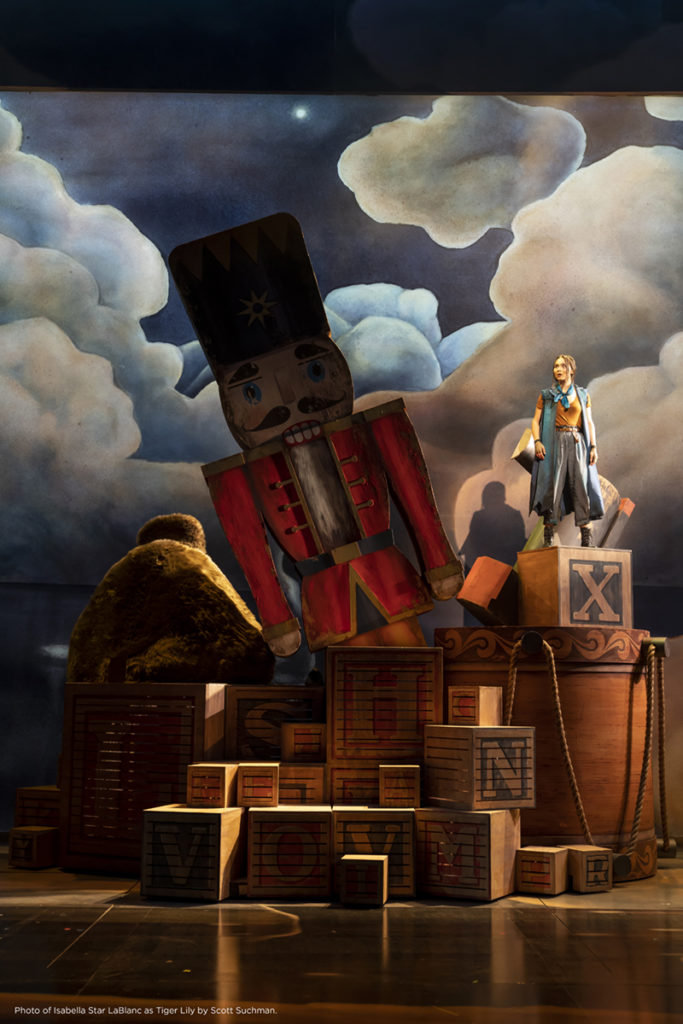
“The most important part of this project was rewriting Tiger Lily to counteract the colonialism, racism and harmful stereotype of the original,” Gunderson writes in an essay in the program. “I’m deeply grateful to the indigenous consultants that helped me begin to understand the Native American perspective.” She adds that her characters become “activists ready to work together to make the world—even the dream world of Neverland—a better place for all.”
This might lead people to think that Peter Pan and Wendy offers the audience an unwanted dose of double-strength vinegar, so that it would only appeal to the small number of families who think a fun day with the kids is a hearty discussion about the evils of colonial oppression.
It is to Gunderson’s great credit that she refrains from lecturing the audience. We learn that Tiger Lily is part of the indigenous peoples who existed in Neverland and that the world changed when Peter Pan and the Lost Boys showed up. In the end battle, tomboy Tiger Lily, scientist Wendy, and girly Tinkerbell all join Peter Pan and the Lost Boys to fight Hook and his gang. Moreover, Tiger Lily says she’s joining the fight for her own reasons and not because Peter Pan told her to.
But Gunderson’s love for Barrie’s male characters makes for effective drama. Peter Pan and Wendy is not a play where the women win when the men lose. Peter Pan could easily have been presented as a jerk. Gunderson’s Peter Pan is initially clueless, but he grows, learns, and improves.
Finally, it should be noted that Peter Pan and Wendy has many jokes, including a couple of groaners. There’s an inscription on a redshirt’s sword that is really funny.
Finding Neverland struck me as a musical that had been rewritten too many times by too many hands. Peter Pan and Wendy strikes me as being Lauren Gunderson’s vision. It should not be the last word in how Peter Pan is portrayed in this century, but as long as audiences realize they are entering Lauren Gunderson’s world and not J.M. Barrie’s, they will find Peter Pan and Wendy is enjoyable, effective, and provocative theatre.
[1] The “Restoration Shakespeare” Macbeth was very well done, with excellent performances by Ian Merrill Peakes as Macbeth and Kate Eastwood Smith as Lady Macbeth. But the Folger made a mistake by presenting the play as a benefit performance by the Bedlam asylum, where some of the swords were real swords that actually killed actors. They should have presented Davenant’s play straight so that the audience could experience it, since the likelihood it will be performed again is vanishingly small.
[2] Shakespeare Theatre dramturg Drew Lichtenberg told us in an essay in the program that harnesses were cutting-edge technology in 1904 and that all the flying in a dress rehearsal led to a set collapse, a delay for a week, and Barrie frantically rewriting the conclusion.
Discover more from File 770
Subscribe to get the latest posts to your email.

I’ve seen Gunderson’s Book of Will. Not SF in any way, but really well done. She fleshed out what is known about how the First Folio was created, turning its makers into real characters, having substantive roles both in the play and in the making of the Folio for the women, and never talking down to the audience about Shakespeare. Funny and suspenseful, despite having a known and not very dramatic ending.